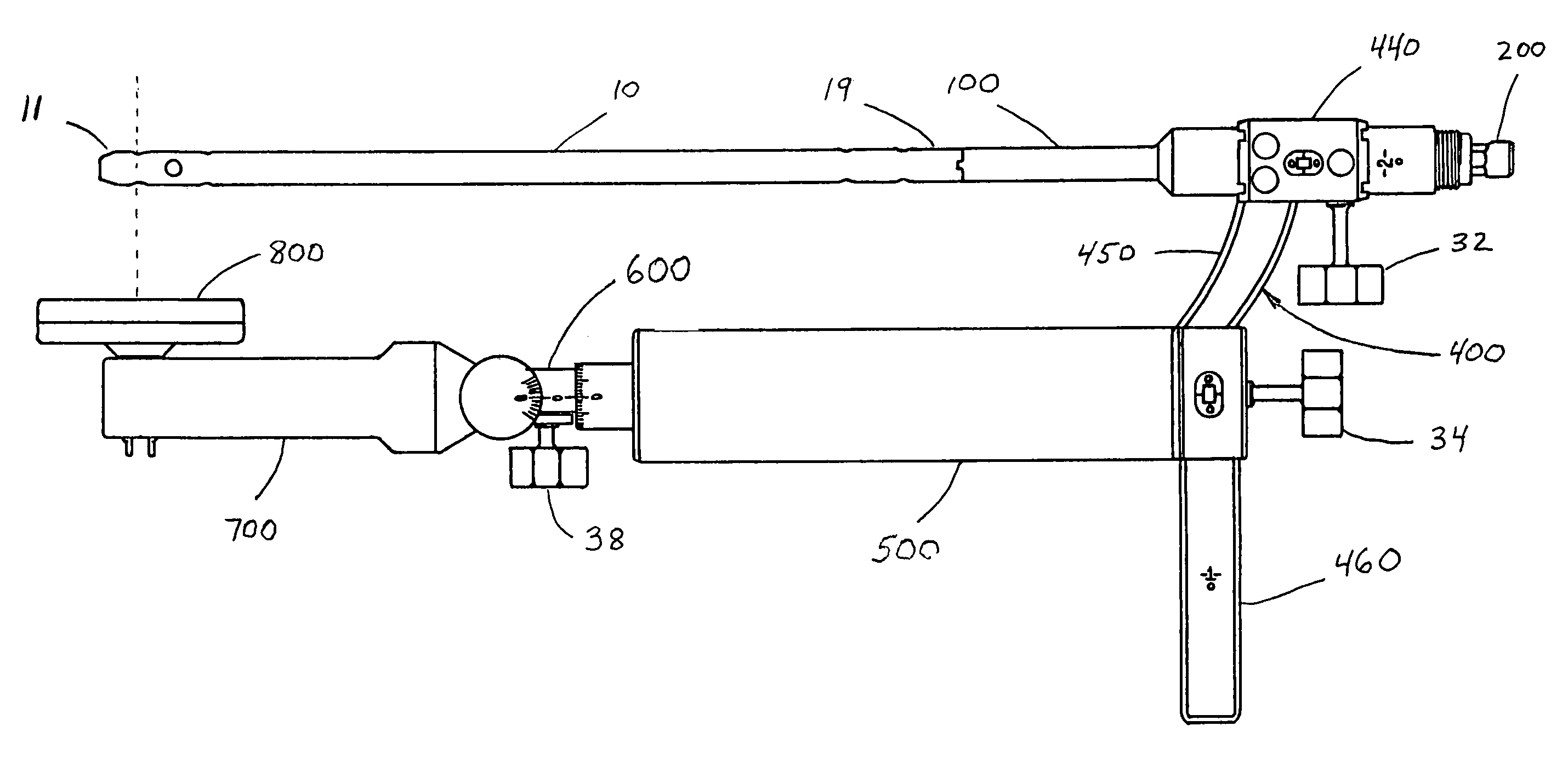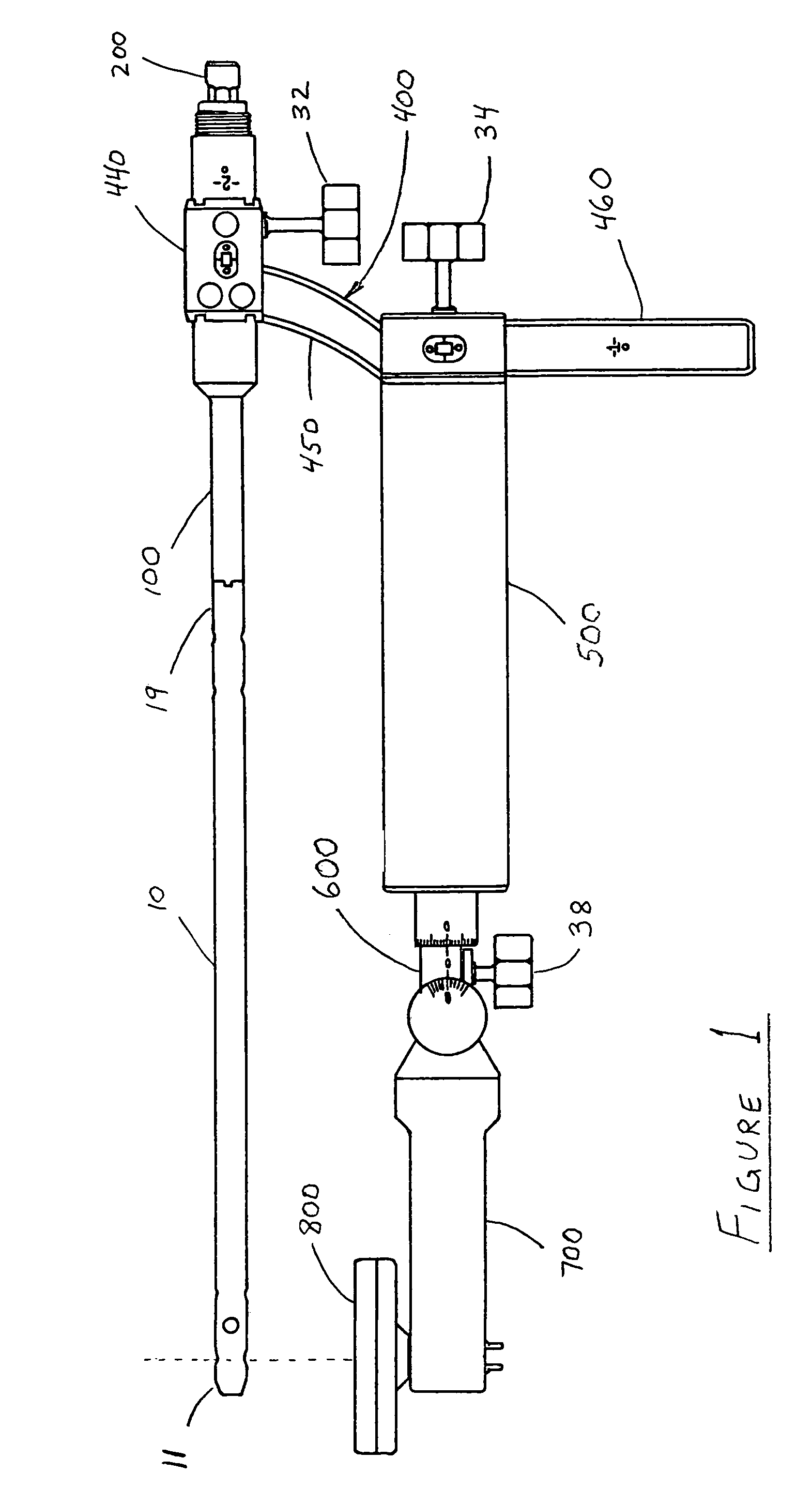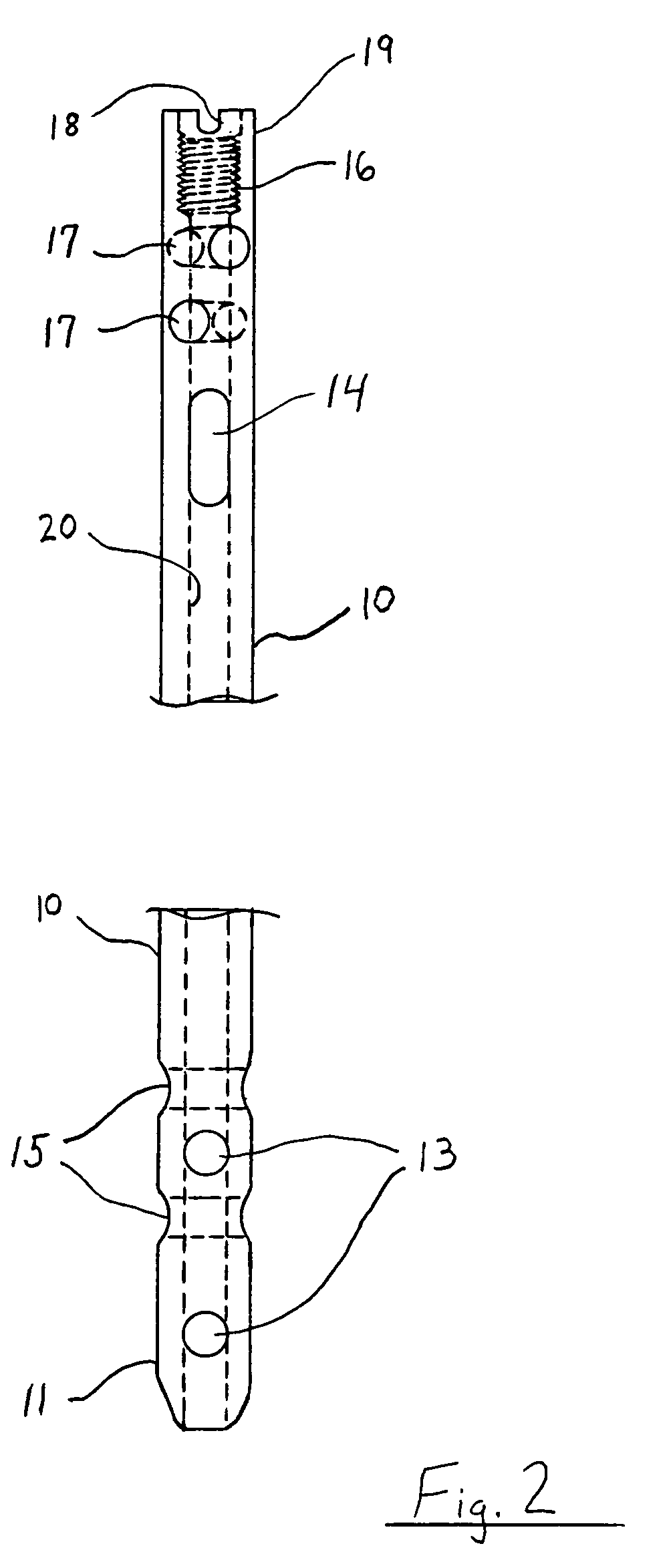Method and system for securing an intramedullary nail
a technology for intramedullary nail and locking member, which is applied in the field of system and method for targeting and placement of locking member, can solve the problems of adding difficulty, difficult to use and rely on conventional targeting guides, and the most difficult procedural aspects of implanting an imn, etc., and achieves simple and efficient procedure, simple design, and the effect of solving the needs of distal targeting
- Summary
- Abstract
- Description
- Claims
- Application Information
AI Technical Summary
Benefits of technology
Problems solved by technology
Method used
Image
Examples
Embodiment Construction
[0049]The drawings show a device embodying the principles and concepts of the present invention. It should be noted that although the figures are directed to the preferred embodiment, other applications of the instant invention are anticipated, as discussed more fully below.
[0050]FIG. 1 shows major portions of a modular assembly for an intramedullary nail (IMN) securing system. An IMN 10 is shown having a distal end 11 depicted on the left side and an opposing proximal end 19. In one assembled embodiment, a nail adapter 100 is preferably coupled to the proximal end 19 of the IMN 10 by a coupler rod 200 that fits inside and extends the length of the nail adapter 100. In the assembled state, the coupler rod 200 is preferably threaded and engaged at one end with the IMN 10, while holding the coupler rod 200 in place with flange elements 210 at an opposite end. A bridge adapter 400 preferably has a cylindrical mounting collar 440 at one end that fits onto the nail adapter 100. A central...
PUM
 Login to View More
Login to View More Abstract
Description
Claims
Application Information
 Login to View More
Login to View More - R&D
- Intellectual Property
- Life Sciences
- Materials
- Tech Scout
- Unparalleled Data Quality
- Higher Quality Content
- 60% Fewer Hallucinations
Browse by: Latest US Patents, China's latest patents, Technical Efficacy Thesaurus, Application Domain, Technology Topic, Popular Technical Reports.
© 2025 PatSnap. All rights reserved.Legal|Privacy policy|Modern Slavery Act Transparency Statement|Sitemap|About US| Contact US: help@patsnap.com



